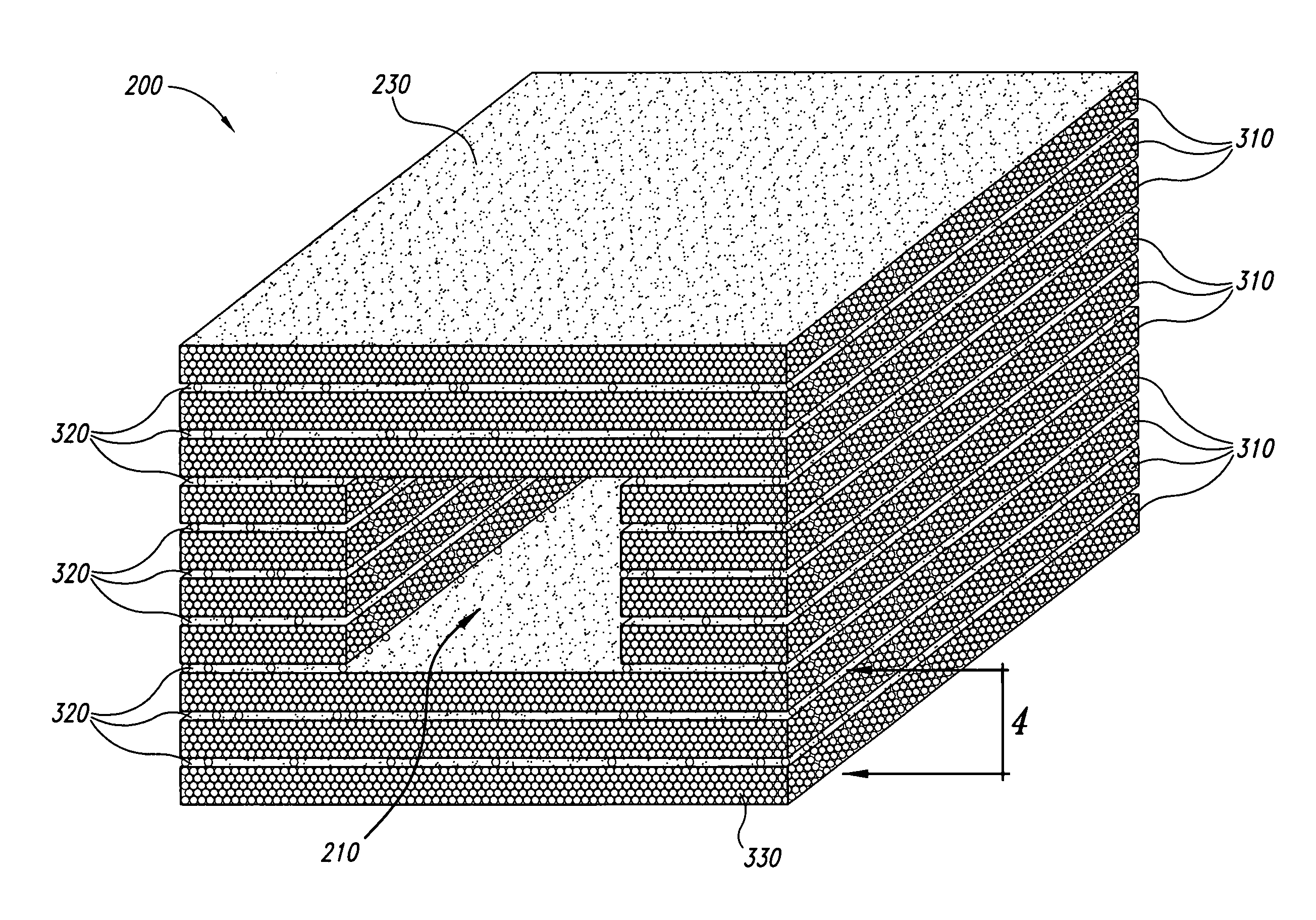Method and apparatus for engineered regenerative biostructures such as hydroxyapatite substrates for bone healing applications
a biostructure and hydroxyapatite technology, applied in the field of engineered regenerative biostructures, can solve the problems of unmet challenges in matching porosity and internal architecture to specific tissue responses, pla and pga were less than ideal for tissue-engineered scaffolds for bone healing applications, and all these products have limitations
- Summary
- Abstract
- Description
- Claims
- Application Information
AI Technical Summary
Problems solved by technology
Method used
Image
Examples
example 1
Staggered Configuration (1400 Staggered)
[0369]This example has essentially only microporosity. FIG. 23A shows a histological progression of the 1400 Staggered implants at 8 weeks. At all time points, new bone and osteoid was identified, both originating from the margins and as unconnected islands. New bone and marrow cavities were identified at 8 weeks.
[0370]Fibrous tissue stained lightly at 4 weeks, with darker staining at 8 and 16 weeks. Vasculature was also apparent at all time points, with progression of blood vessels with thin walls at 4 weeks, thicker walls at 8 weeks, and red blood cell circulation at 16 weeks. At 4 weeks, only one of the implants integrated with the bone from the margins, while the other implant did not integrate at all and was separated by fibrous tissue from the margins. At all time points, as with the 1400 Stacked implants, the rougher bottom surface with “channels” facing the dura contained new bone, with unconnected islands integrating into the implants...
example 2
Solid porous biostructure with small pore size and also slightly larger pore structure, but without any macrostructures or organized mesostructures
[0372]The biostructure of this example contains microporosity as is always present and also adds a slightly larger porosity in a way which does not create any long-range ordered structures. These are referred to as the 1400 Pressed implants. FIGS. 25A and 25B are schematic views of an alternative embodiment for process steps for designing porosity into the biostructure. FIG. 25A illustrates a layer of mixed powder 2500 of powder particles 2510, 2520 of varying sizes. Particles 2510 are made of a sinterable ceramic material. Particles 2520 are place-holders and may be made of a material such as poly ethylene glycol which can decompose into gaseous decomposition products at a temperature lower than the sintering temperature. The particles 2520 may have a slightly larger average particle size than the particles 2510, although this is a funct...
example 3
Mesostructures (along with small pore size) HA-No
[0376]This example, while continuing to use the small particle and pore size as in the previous example, also has the presence of mesostructures. Mesostructures were achieved by virtue of the relatively small saturation parameter as describe herein. This Examples contains samples with two different designations, both manufactured nominally identically. One designation is HA-no, and the other designation is 1400 Stacked. The printing parameters for this case were a flowrate of 1.4 g / min, drop-to-drop spacing of 450 microns, line-to-line spacing of 450 microns, and layer thickness of 450 microns. The articles were printed in the form of cylinders having a diameter of 8 mm and an axial dimension of 3 mm. The lines of binder were deposited in a stacked configuration with each line directly above the line from the layer below. The orientation of the fast axis motion and hence the mesostructures was horizontal. A typical packing fraction in...
PUM
| Property | Measurement | Unit |
|---|---|---|
| pore size distribution | aaaaa | aaaaa |
| porosity | aaaaa | aaaaa |
| porosity | aaaaa | aaaaa |
Abstract
Description
Claims
Application Information
 Login to View More
Login to View More - R&D
- Intellectual Property
- Life Sciences
- Materials
- Tech Scout
- Unparalleled Data Quality
- Higher Quality Content
- 60% Fewer Hallucinations
Browse by: Latest US Patents, China's latest patents, Technical Efficacy Thesaurus, Application Domain, Technology Topic, Popular Technical Reports.
© 2025 PatSnap. All rights reserved.Legal|Privacy policy|Modern Slavery Act Transparency Statement|Sitemap|About US| Contact US: help@patsnap.com



